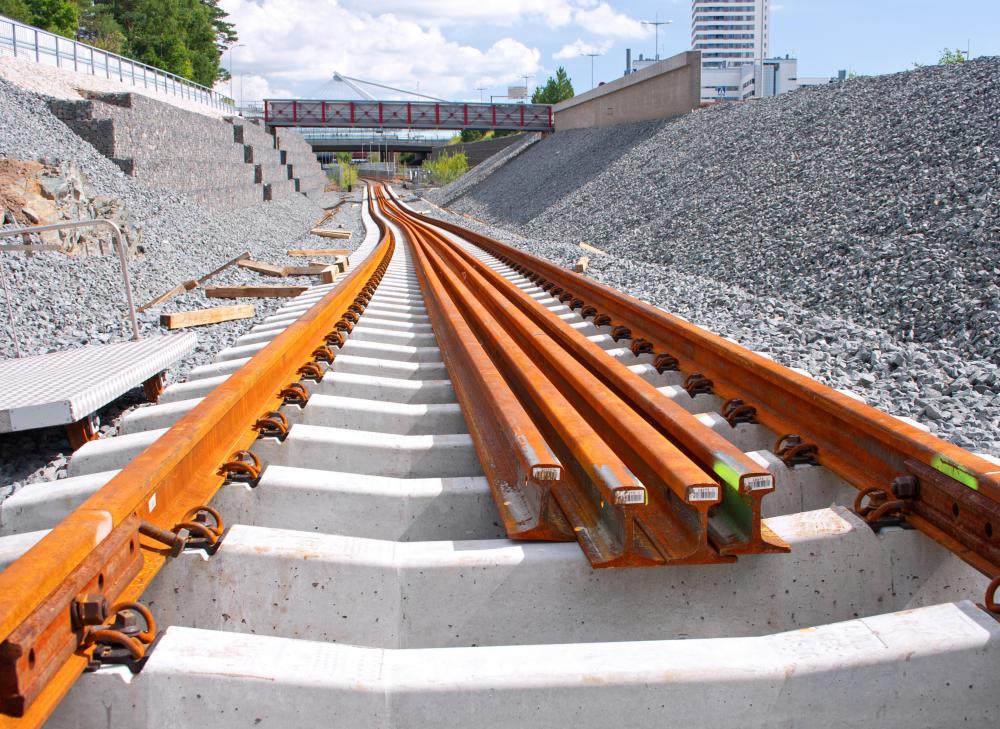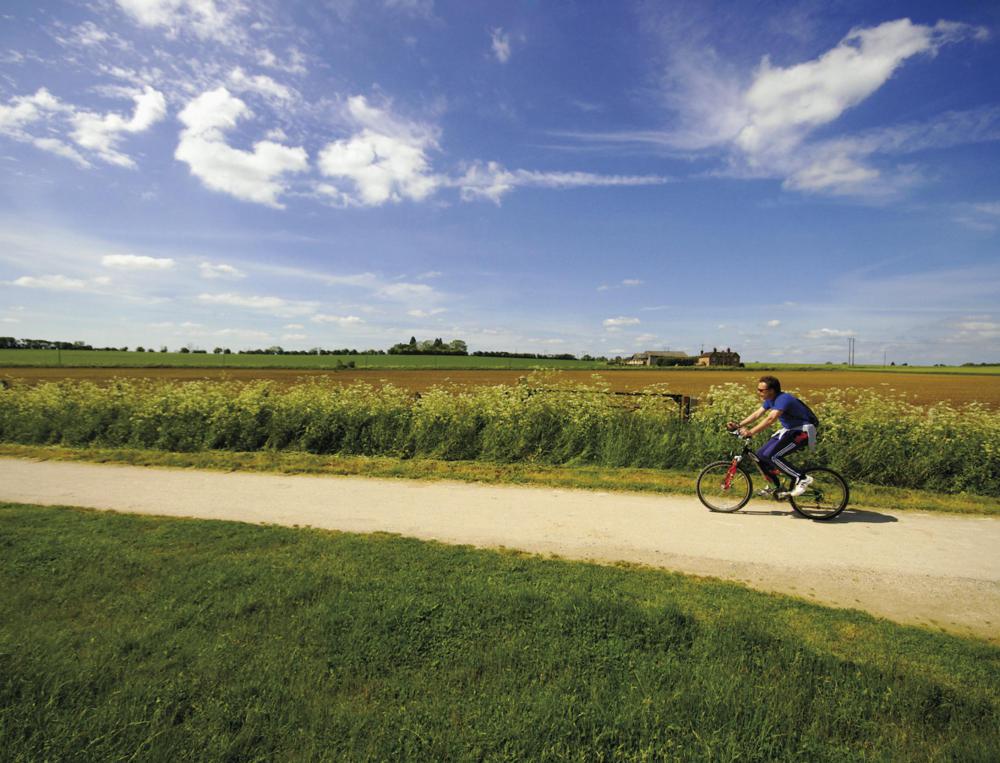At AllThingsNature, we're committed to delivering accurate, trustworthy information. Our expert-authored content is rigorously fact-checked and sourced from credible authorities. Discover how we uphold the highest standards in providing you with reliable knowledge.
What is a Rail Trail?
As smaller, shorter branches of major railways became unfeasible to maintain economically, rail companies consolidated their lines and the short branch lines became obsolete and abandoned. In an effort to use those lines for something useful and beneficial, the rail trail became common in the United States and other countries. Also known as a linear park, a rail trail is any trail or pathway that was built on a railway easement that is no longer in use. They are generally multi-use trails and cater to walkers, cyclists, rollerbladers, and other recreationalists, usually excluding motorized traffic.
A rail trail usually spans several miles in a straight line — hence the designation linear park — because railways were designed to cross terrain at easy inclines and with few sharp turns; therefore, trails that follow these old railways mimic those characteristics. Another name for a rail trail is a greenway, since many of these parks cut through wooded areas. It is not uncommon to find a rail trail that runs through historic areas, and many of these trails tout the history of the surroundings as one of its key features. The first rail trail to open in the United States was the Elroy-Sparta State Trail in Wisconsin, which opened in 1965. Since then, the Rails-to-Trails Conservancy, a non-profit group based in Washington, D.C. has worked to convert hundreds of miles of abandoned railway lines into trails for hiking and other outdoor activities.

A rail trail can vary in length from only a mile or less, to well over a hundred miles (161 km). The longest rail trail in the United States is the Katy Trail in Missouri, which spans 225 miles (362 km). The nature and length of the trail depends on a variety of issues, the most prominent of which is land rights and the ability to effectively convert the railways into trails. Many communities oppose rail trails because of increased traffic, decreased security, and other unforeseen issues.

Further, because railways were often built on a combination of privately owned land, federal land, and easements — or special rights to use lands owned by another entity without that entity's explicit permission — it can be difficult to get permission to convert railways to trails. Some of the agreements and deeds for these lands were written several decades and even centuries ago, further complicating the issue and making property boundaries difficult to pinpoint.
Frequently Asked Questions
What exactly is a rail trail?

A rail trail is a multi-use path, typically created from abandoned railway lines. These trails are repurposed for public use, providing a scenic and safe route for walking, cycling, horseback riding, and sometimes even cross-country skiing. They preserve historic rail corridors, turning them into community assets that promote outdoor recreation and alternative transportation.
How long are rail trails usually?

The length of rail trails can vary significantly, ranging from short paths to extensive networks spanning hundreds of miles. For example, the Great American Rail-Trail aims to connect nearly 4,000 miles across 12 states, offering an expansive route for long-distance travelers and local users alike, according to the Rails-to-Trails Conservancy.
Are rail trails safe to use?
Rail trails are generally considered safe as they are designed with user safety in mind. They are often removed from vehicle traffic, reducing the risk of accidents. Many trails are managed by local organizations that maintain the paths, provide signage, and sometimes even patrol the area to enhance safety and user experience.
What kind of wildlife can be seen on rail trails?
Rail trails often pass through diverse habitats, making them excellent for wildlife observation. Depending on the region, one might encounter deer, birds, small mammals, and various plant species. Some trails, like those in wetland areas, may also offer glimpses of amphibians and aquatic life, contributing to a rich natural experience.
Do rail trails contribute to the local economy?
Yes, rail trails can significantly boost local economies. They attract tourists and recreational users who spend money on lodging, dining, and shopping. According to a study by Headwaters Economics, trails can increase property values nearby and stimulate investment in adjacent areas, benefiting local businesses and communities.
Can rail trails be used year-round?
Many rail trails are accessible year-round, but their usability can depend on the local climate and maintenance. In regions with snowfall, some trails are groomed for winter sports like cross-country skiing or snowshoeing, while others may be less accessible during winter months. Always check local trail conditions and guidelines before planning your visit.
AS FEATURED ON:
AS FEATURED ON:














Discuss this Article
Post your comments